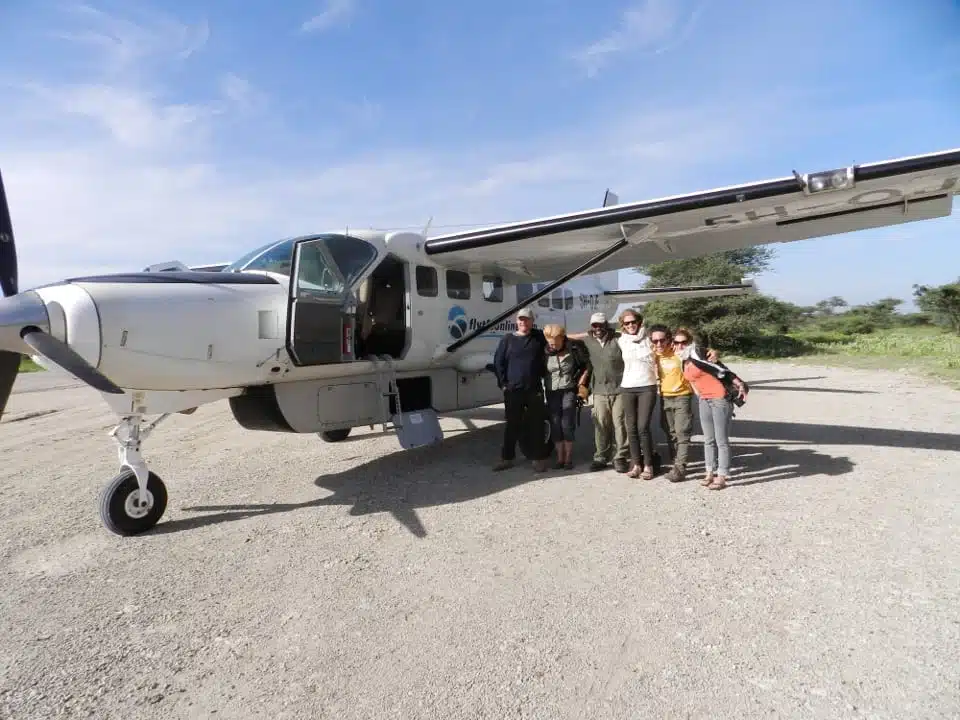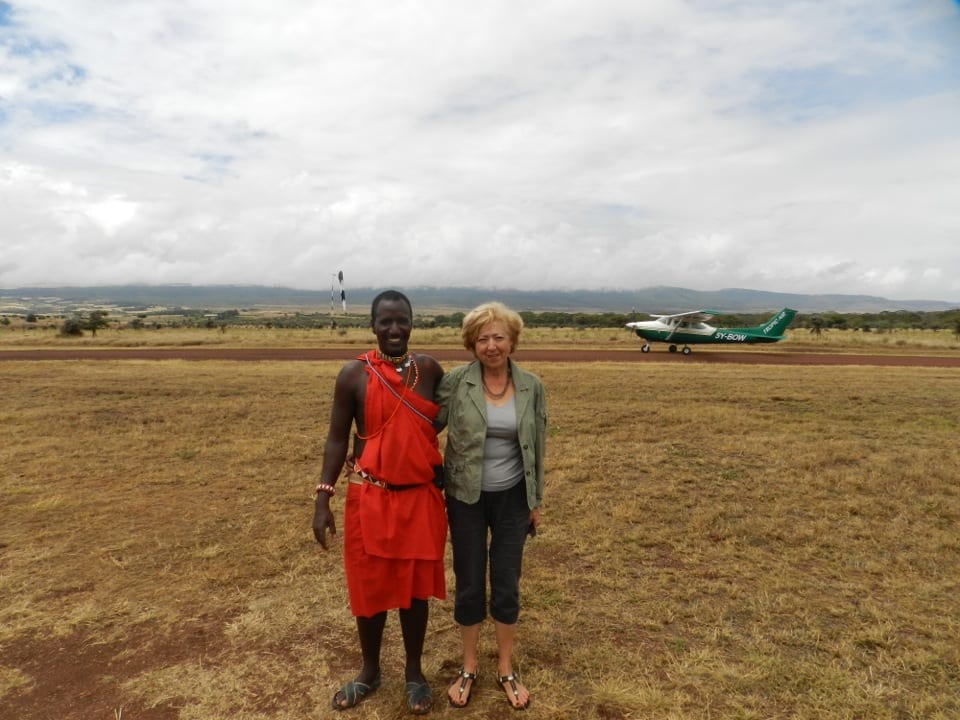The safest form of transportation is an escalator.
Right behind the moving staircase, in number two, we have aviation.
The most important difference between an escalator and an aircraft is that an escalator will not deliver you to the most remote and beautiful parts of Africa. Unfortunately, if you have not grown up with exposure to light aircraft the small planes that make all the regular rounds throughout Africa can be a bit of a shock to the system.
It is perfectly understandable.
They look ridiculously tiny.
They are not only noisy outside but there seems to be no attempt at making them less noisy once you are on the INSIDE.
The African temperatures can make them feel like overheated tin traps for stale air.
Then the entire noisy, overheated tin can starts shaking alarming… whilst growing noisier and hotter.
And noisier.
And hotter.
After you are airborne there are incredible sights all around you. Some of the most beautiful vistas on earth may open up like scenes from Out of Africa… but you may be too busy fighting airsickness to notice as your little tin can navigates the hot African air that turns into turbulence a couple of hundred feet up.
Of course, you might also be incredibly excited by it all. But we are taking bets that folk reading this will fall closer to the ‘What am I doing in an airborne washing machine?’ category.
 Here is the absolute, categoric truth:
Here is the absolute, categoric truth:
Your Safari Aircraft is arguably one of the safest forms of aviation in the world.
Bush flying companies undergo exhaustive, incredibly strict and incredibly frequent audits. Not only of their books and their operations but also of their aircraft and their pilots. And the standards they adhere to are never national— they are always international.
They also operate hundreds of flights a week and their pilots are some of the most experienced in this particular branch of flying in the industry.
If you want it broken down a bit more, within aviation Jets have a slightly lower accident rate than Turboprops – but the difference is infinitesimal.
Are bigger aircraft safer?
Size is not a determining factor in aviation safety
Is it safer to have more than one engine?
No. The more engines, the more chance of something going wrong. But regulatory authorities have very strict standards for all aircraft and pilots operating commercially.
How can you best prepare yourself for a light aircraft flight?
A recently refueled light aircraft may give off a light smell of fuel. This is normal.
Prepare yourself for turbulence
It is completely normal, and your pilot and aircraft will experience it on a daily basis. Windy and hot days will produce the most turbulence. There is no need to panic. If you can, ask for a seat towards the front or the middle of the plane. Take anti-sickness tablets well in advance, suck on some peppermints and have a face spray handy to cool yourself down. If it will help you, download a podcast or meditation app to listen to (there will be no inflight entertainment here… although the scenery may be spectacular).
Don’t prepare to fail
Many people love flying in light aircraft and you might be one of the folks on safari for whom the transfers are one of the highlights! Have your camera ready… you won’t be anywhere near as high up as regular commercial flights and the wings are almost always above you, leaving the earth below you quite clear which may allow you to capture the perfect bird’s eye view of Africa.
Flying with the Birds
The pilots are always keeping a lookout for birds as they share their airspace and it is possible to see the lone eagle floating past in the distance or flocks of flamingos drifting below you. Hippos can look like smooth wet stones at the bottom of clear rivers and there is something utterly magical about large herds of animals on the move underneath the aircraft.
Double landings
Occasionally, in very remote areas your pilot may have to do a flyby before you actually land to clear the runway of visiting wildlife – so prepare for more than one touchdown on arrival!
Thorny wheels
Why do the pilots cover the wheels in thorn bushes when the aircraft overnights on airstrips out in the bush?
Because hyenas think rubber is a very tasty snack indeed, but they are too lazy to clear the pesky thorns to get to the tires to play with them.
The little airplanes also have to be literally tied down wherever they stand otherwise they could easily be blown away by the wind as they are so light and aerodynamic.
Do you have any other questions for us? Let us know!
… looking forward to welcoming you on board a tiny bush plane very soon.

